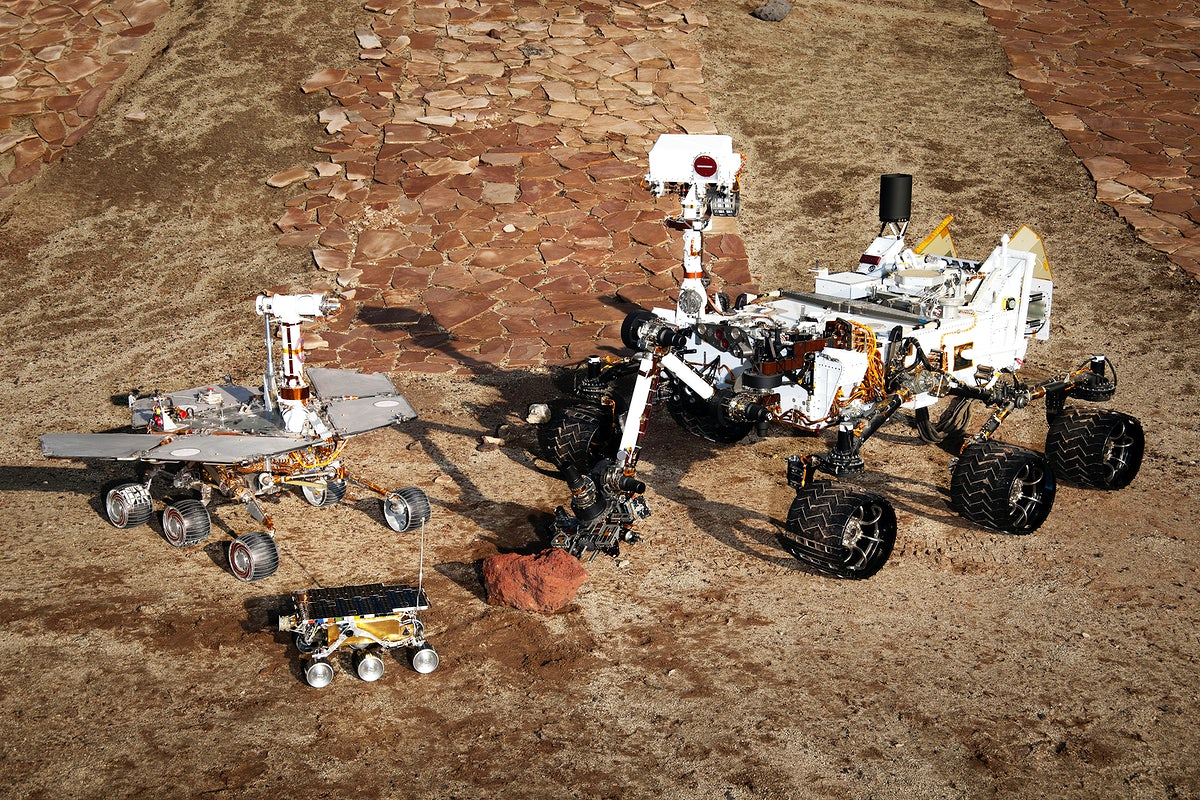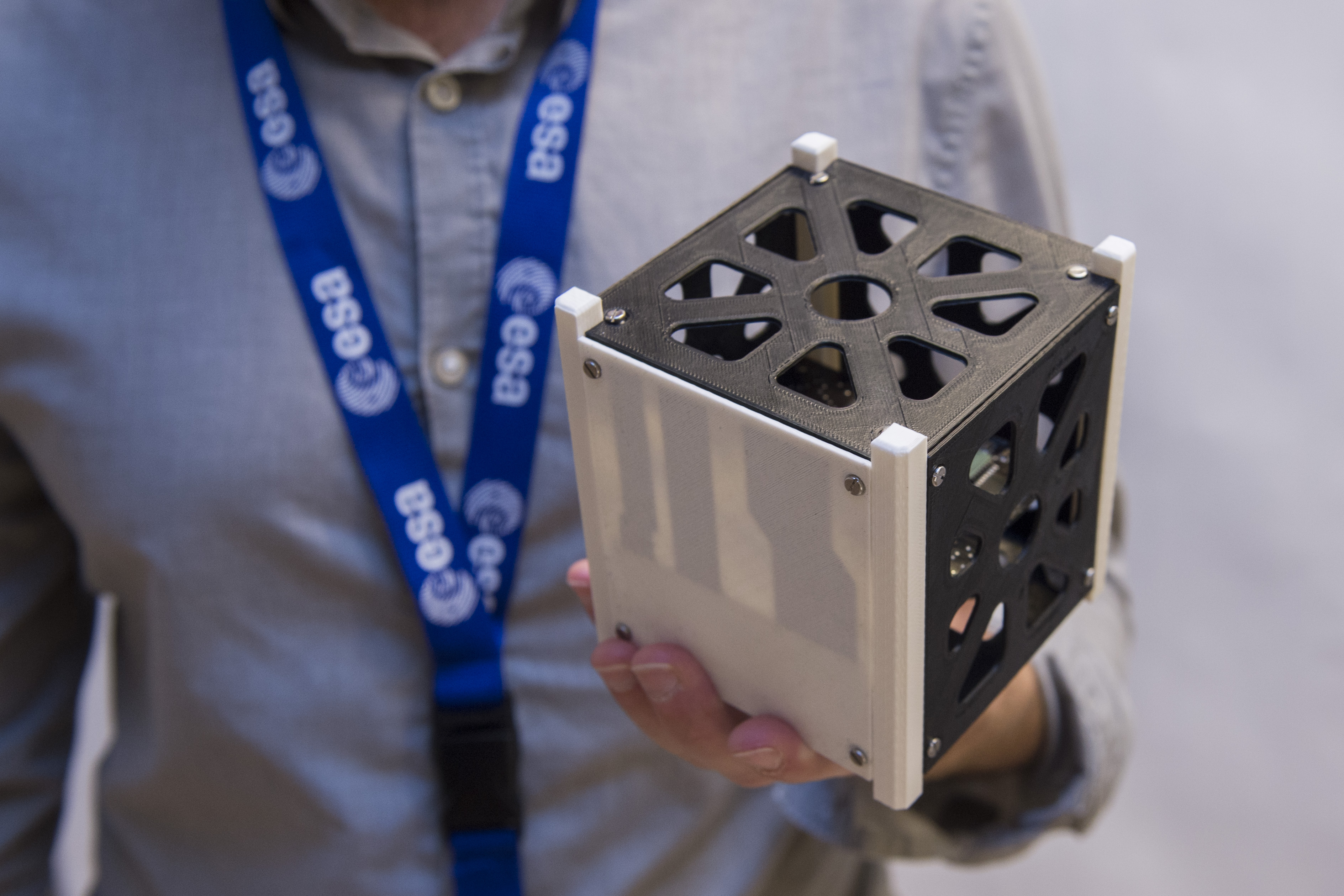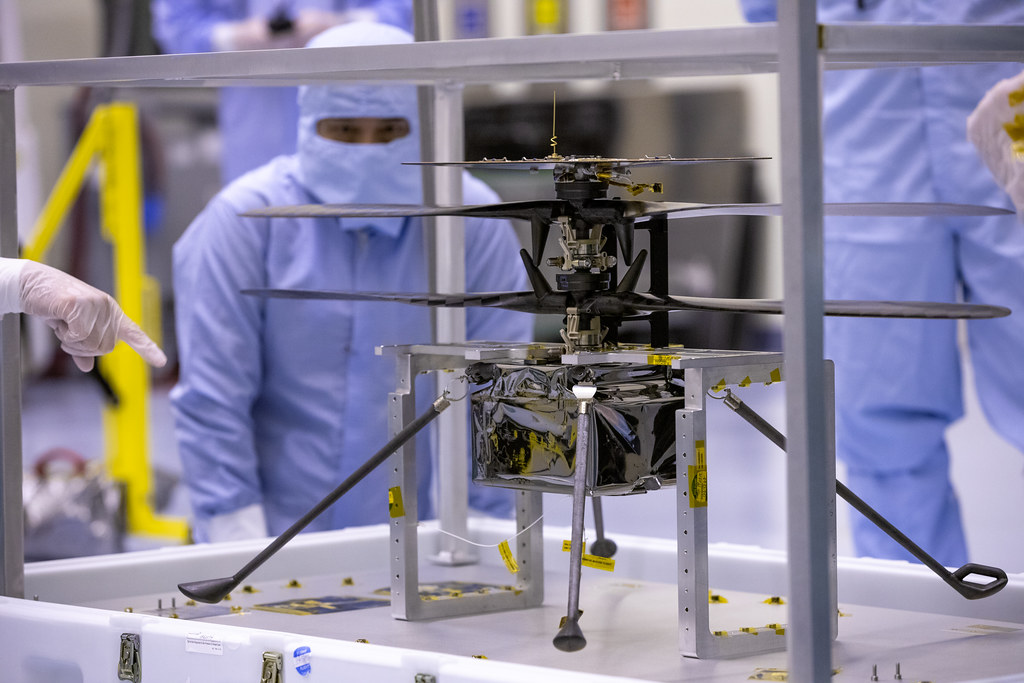7.7: Missions to Mars.
( \newcommand{\kernel}{\mathrm{null}\,}\)
7.7.1 Early Missions to Mars
Mars has long fascinated humanity. From H. G. Wells’ War of the Worlds to Percival Lowell’s claims of a Martian society digging canals to move water from the poles to the equator, the possibility of Mars having life has been a topic of speculation for well over a century. Since 1960, we have sent numerous probes to the Red Planet. Unfortunately, about half of the spacecraft we sent to Mars have failed in their mission. The Table below summarizes the Martian missions to date.
|
Spacecraft |
Launch Date |
Operator |
Mission |
Outcome |
|
1M No.1 |
10 October 1960 |
USSR |
Flyby |
Launch failure |
|
1M No.2 |
14 October 1960 |
USSR |
Flyby |
Launch failure |
|
2MV-4 No.1 |
24 October 1962 |
USSR |
Flyby |
Launch failure |
|
Mars 1 |
1 November 1962 |
USSR |
Flyby |
Spacecraft failure |
|
2MV-3 No.1 |
4 November 1962 |
USSR |
Lander |
Launch failure |
|
Mariner 3 |
5 November 1964 |
NASA |
Flyby |
Launch failure |
|
Mariner 4 |
28 November 1964 |
NASA |
Flyby |
Successful |
|
Zond 2 |
30 November 1964 |
USSR |
Flyby |
Spacecraft failure |
|
Mariner 6 |
25 February 1969 |
NASA |
Flyby |
Successful |
|
2M No.521 |
27 March 1969 |
USSR |
Orbiter |
Launch failure |
|
Mariner 7 |
27 March 1969 |
NASA |
Flyby |
Successful |
|
2M No.522 |
2 April 1969 |
USSR |
Orbiter |
Launch failure |
|
Mariner 8 |
9 May 1971 |
NASA |
Orbiter |
Launch failure |
|
Kosmos 419 |
10 May 1971 |
USSR |
Orbiter |
Launch failure |
|
Mars 2 |
19 May 1971 |
USSR |
Orbiter |
Successful |
|
Mars 2 lander |
19 May 1971 |
USSR |
Lander |
Spacecraft failure |
|
Mars 3 |
28 May 1971 |
USSR |
Orbiter |
Successful |
|
Mars 3 |
28 May 1971 |
USSR |
Lander |
Successful |
|
Prop-M Rover |
28 May 1971 |
USSR |
Rover |
Partial failure |
|
Mariner 9 |
30 May 1971 |
NASA |
Orbiter |
Successful |
|
Mars 4 |
21 July 1973 |
USSR |
Orbiter |
Spacecraft failure |
|
Mars 5 |
25 July 1973 |
USSR |
Orbiter |
Partial failure |
|
Mars 6 |
5 August 1973 |
USSR |
Lander |
Spacecraft failure |
|
Mars 7 |
9 August 1973 |
USSR |
Lander |
Spacecraft failure |
|
Viking 1 orbiter |
20 August 1975 |
NASA |
Orbiter |
Successful |
|
Viking 1 lander |
20 August 1975 |
NASA |
Lander |
Successful |
|
Viking 2 orbiter |
9 September 1975 |
NASA |
Orbiter |
Successful |
|
Viking 2 lander |
9 September 1975 |
NASA |
Lander |
Successful |
|
Phobos 1 |
7 July 1988 |
USSR |
Orbiter |
Spacecraft failure |
|
Phobos 2 |
12 July 1988 |
USSR |
Orbiter |
Partial failure |
|
Mars Observer |
25 September 1992 |
NASA |
Orbiter |
Spacecraft failure |
|
Mars Global Surveyor |
7 November 1996 |
NASA |
Orbiter |
Successful |
|
Mars 96 |
16 November 1996 |
Russia |
Orbiter |
Launch failure |
|
Mars Pathfinder |
4 December 1996 |
NASA |
Lander |
Successful |
|
Sojourner |
4 December 1996 |
NASA |
Rover |
Successful |
|
Nozomi |
3 July 1998 |
ISAS |
Orbiter |
Spacecraft failure |
|
Mars Climate Orbiter |
11 December 1998 |
NASA |
Orbiter |
Spacecraft failure |
|
Mars Polar Lander |
3 January 1999 |
NASA |
Lander |
Spacecraft failure |
|
Deep Space 2 |
3 January 1999 |
NASA |
Penetrator |
Spacecraft failure |
|
Mars Odyssey |
7 April 2001 |
NASA |
Orbiter |
Operational |
|
Mars Express |
2 June 2003 |
ESA |
Orbiter |
Operational |
|
Beagle 2 |
2 June 2003 |
ESA |
Lander |
Lander failure |
|
10 June 2003 |
NASA |
Rover |
Successful |
|
|
Opportunity |
8 July 2003 |
NASA |
Rover |
Successful |
|
Rosetta |
2 March 2004 |
ESA |
Gravity assist |
Successful |
|
Mars Reconnaissance Orbiter |
12 August 2005 |
NASA |
Orbiter |
Operational |
|
Phoenix |
4 August 2007 |
NASA |
Lander |
Successful |
|
Dawn |
27 September 2007 |
NASA |
Gravity assist |
Successful |
|
Fobos-Grunt |
8 November 2011 |
Russia |
Orbiter |
Spacecraft failure |
|
Yinghuo-1 |
8 November 2011 |
China |
Orbiter |
Failure |
|
Curiosity |
26 November 2011 |
NASA |
Rover |
Operational |
|
Mars Orbiter Mission |
5 November 2013 |
India |
Orbiter |
Operational |
|
MAVEN |
18 November 2013 |
NASA |
Orbiter |
Operational |
|
ExoMars Trace Gas Orbiter |
14 March 2016 |
ESA/Russia |
Orbiter |
Operational |
|
Schiaparelli EDM lander |
14 March 2016 |
ESA |
Lander |
Spacecraft failure |
|
InSight |
5 May 2018 |
NASA |
Lander |
Operational |
|
MarCO |
5 May 2018 |
NASA |
Two CubeSats flyby supporting InSight |
Successful |
|
Emirates Mars Mission |
19 July 2020 |
UAE |
Orbiter |
En route |
|
Tianwen-1 orbiter |
23 July 2020 |
China |
Orbiter |
En route |
|
Tianwen-1 lander/rover |
23 July 2020 |
China |
Lander/rover |
En route |
|
Perseverance rover |
30 July 2020 |
NASA |
Rover |
En route |
|
Ingenuity helicopter |
30 July 2020 |
NASA |
Helicopter |
En route |
In May of 1971, following the policy of duel missions, the Soviets launched the Mars 2 and Mars 3 orbiter/lander missions. Both Mars 2 and 3 orbiters reached orbit, but they could not map the surface due to dust storms. The Soviets did not design these orbiters to be reprogrammed after launch, so they were unable to tell the orbiters to hold off until the dust storms abated. Mars is notorious for dust storms that can cover the entire planet and last for months. Meanwhile, the Mars 2 lander failed to land. The Mars 3 did land, but contact was lost 14.3 seconds after landing.
Meanwhile, NASA also launched Mariner 9 the same month as Mars 2 and Mars 3. Mariner 9 became first satellite to orbit another planet, just barely beating Mars 2 and Mars 3. Unlike the Soviets, NASA was able to reprogram Mariner 9, telling to wait out the dust storms. After months of waiting, Mariner 9 sent back images of the surface.
7.7.2 The Viking Missions
In 1975, NASA launched the twin Viking orbiter/lander probes. Both proved to be successful with Viking 1 orbiter orbiting for 1386 orbits while the Viking 2 orbiter orbited for 700 orbits. Both the landers also operated successful. Viking 1 landed successfully and operated for 2245 Earth days while Viking 2 landed successfully and operated for 1281 Earth days. Both landers performed the first chemical tests to look for the presence of life. These test involved taking samples of the Martian regolith and subjecting them to chemical tests to look for gases that could be produced by biological life. The results found some chemicals that could indicate life, but were more likely to have been formed inorganically. At best then, the Viking results were considered inconclusive.
 Model of the Viking lander.
Model of the Viking lander.
https:/www.flickr.com/photos/pmillera4/43495946994;
7.7.3 Sojourner, Spirit, and Opportunity: the First Rovers on Mars
There were no further Mars missions until 1988, which time, both the Soviet Union and NASA had numerous failures. Then in 1996, NASA’s Mars Global Surveyor succeeded in getting into orbit and operated for seven Earth years. 1996 also saw the landing of the Pathfinder mission, which included the Sojourner. Named after the abolitionist and women’s right activist Sojourner Truth, Sojourner became the first successful rover on Mars and operated for 84 days. The Pathfinder lander was formally named the Carl Sagan Memorial Station after its touchdown. Pathfinder was also the first lander to use the “airbag” system in which inflated bags to cushion its landing. After bouncing several times on the Martian surface, Pathfinder rolled to a stop, opened, and allowed Sojourner to roll out.
However, in 1998, NASA suffered what was probably its most embarrassing failure. The Mars Climate Observer approached Mars too closely during orbit insertion attempt because one of the contractors failed to convert their units from Imperial to metrics. Then in 1999, NASA’s Mars Polar Lander failed to land and its Deep Space 2 lost communication after landing.
These got better at the beginning of the 21st century. For example, in 2001, NASA’s Mars Odyssey successfully entered orbit and is expected to remain operational until 2025. Then in 2003, NASA’s Mars Express also entered orbit and is expected to remain operational until 2026. Meanwhile, in 2003, Europe’s Beagle 2 was deployed by Mars Express, landed successfully, but two solar panels failed to deploy and lost communication with Earth.
However, in 2003, NASA successfully deployed the Spirit and Opportunity rovers using the airbag landing system. Spirit landed on January 4, 2004. It was originally intended to last for 90 days. However, Spirit exceeded expectations and continued to collect geologic and meteorological data for years. On May 1, 2009, 21.9 times planned its original mission duration, Spirit became stuck in soft soil. The last communication with Earth was March 22, 2010. Meanwhile, Opportunity also performed better that its designers had hoped. It landed on January 25, 2004, three weeks after Spirit in Meridiani Planum. Opportunity’s original mission was also for 90 days. It remained in operation until Feb 2019, collecting data on the rocks and atmosphere of Mars. Opportunity found first confirmed meteorite on the surface of Mars. Spirit and Opportunity both found evidence water once flowed on Mars. In 2018, Opportunity went into hibernation mode due to a dust storm which blocked sunlight for its solar panels. Attempts to revive the rover after the storm failed and in February 2019, NASA declared Opportunity’s mission complete, fifteen years after its landing.
 Models of three Mars rovers: Sojourner (foreground), Spirit/Opportunity (left), and Curiosity (right).
Models of three Mars rovers: Sojourner (foreground), Spirit/Opportunity (left), and Curiosity (right).
https:/www.rawpixel.com/image/440549/free-photo-image-mars-rover-astrology;
In 2005, NASA’s Mars Reconnaissance Orbiter was successful and continues to map the surface today. Then in 2007, NASA launched the Phoenix lander. Built from spare parts and modifications from the failed polar lander, Phoenix rose from the ashes of that failure. Successfully landing on Mars, ts mission lasted until November 2, 2008. Phoenix found evidence of perchlorates, chlorine containing compounds that might indicate life once existed on Mars.
Curiosity, the next rover from NASA landed in Gale Crater on August 6, 2012. Unlike the previous rovers, Curiosity was too large for the airbag system. Instead, NASA employed the “sky crane” system. Rockets slowed the spacecraft’s descent while a cable lowered Curiosity onto the surface. Once Curiosity touched down, the cable detached, and the sky crane component crashed onto the surface. Curiosity’s initial 2-year mission has been extended indefinitely. It is looking for any evidence of biological life in Mars’ past. Recently Curiosity detected methane in the atmosphere and other organic chemicals that could be the “precursors” of life.
7.7.4 Insight, Maven, and Perseverence
Other recent missions to Mars include:
- India’s Mars Orbiter Mission which is expected to continue operation until 2020.
- NASA’s Maven (Mars Atmosphere and Volatile Evolution) orbiter continues to study the Martian atmosphere and how Mars lost so much of it over time.
- The joint ESA/Russian ExoMars Trace Gas Orbiter (TGO) is also studying the Martian atmosphere, particularly how it has so much methane.
- NASA’s InSight landed on November 26, 2018 in the Elysium Planitia. Its primary objective is to study the crust, core, and mantle of Mars. It uses a seismometer and has recently detected some seismic activity on Mars and includes the “mole” which digs 16 feet below the surface to measure temperatures. InSight also includes to CubeSats, MarCO-A and MarCO-B, nicknamed Wall-E and Eve. They were deployed as communication relay satellites to keep InSight in communication even when it is out of line of sight with Earth. Wall-E and Eve are first CubeSats deployed beyond Earth orbit. each weighs about 13.5 Kg (30 lb) and are an example of small, lightweight satellites that are increasingly being used for low-cost missions.
- Perseverance was launched in 2020 and landed on Mars in February 2021.
- Perseverance included the helicopter Ingenious, which is now the first successful powered flight on another planet.
 Artist's conception of the Mars InSight lander.
Artist's conception of the Mars InSight lander.
https:/www.flickr.com/photos/48213136@N06/47025483491;
 Small, lightweight cubesats are being used for low cost orbital missions around Earth and Mars.
Small, lightweight cubesats are being used for low cost orbital missions around Earth and Mars.
https:/commons.wikimedia.org/wiki/File:Electrical_lines_in_CubeSat_body_ESA377711.jpg;
 This helicopter was deployed remotely by NASA's Perseverance rover in 2021.
This helicopter was deployed remotely by NASA's Perseverance rover in 2021.
https:/www.flickr.com/photos/nasakennedy/49670381472
Planned missions to Mars over the next few years include:
- Hope Mars Mission, which is an orbiter planned by the United Arab Emirates
- In 2020, NASA launched Perseverance a combined rover/helicopter mission This will be the first helicopter deployed on another planet.
- ESA and Russia will launch the joint mission, Rosalind Franklin (Formally ExoMars) rover.
- China will launch the Mars Global Remote Sensing Orbiter and a Small Rover (HX-1).
- Japan with launch the Mars Terahertz Microsatellite, a combined orbiter/rover mission and the Martian Moons Exploration, which includes an orbiter and a Phobos lander.
- India will launch Mars Orbiter Mission 2.













